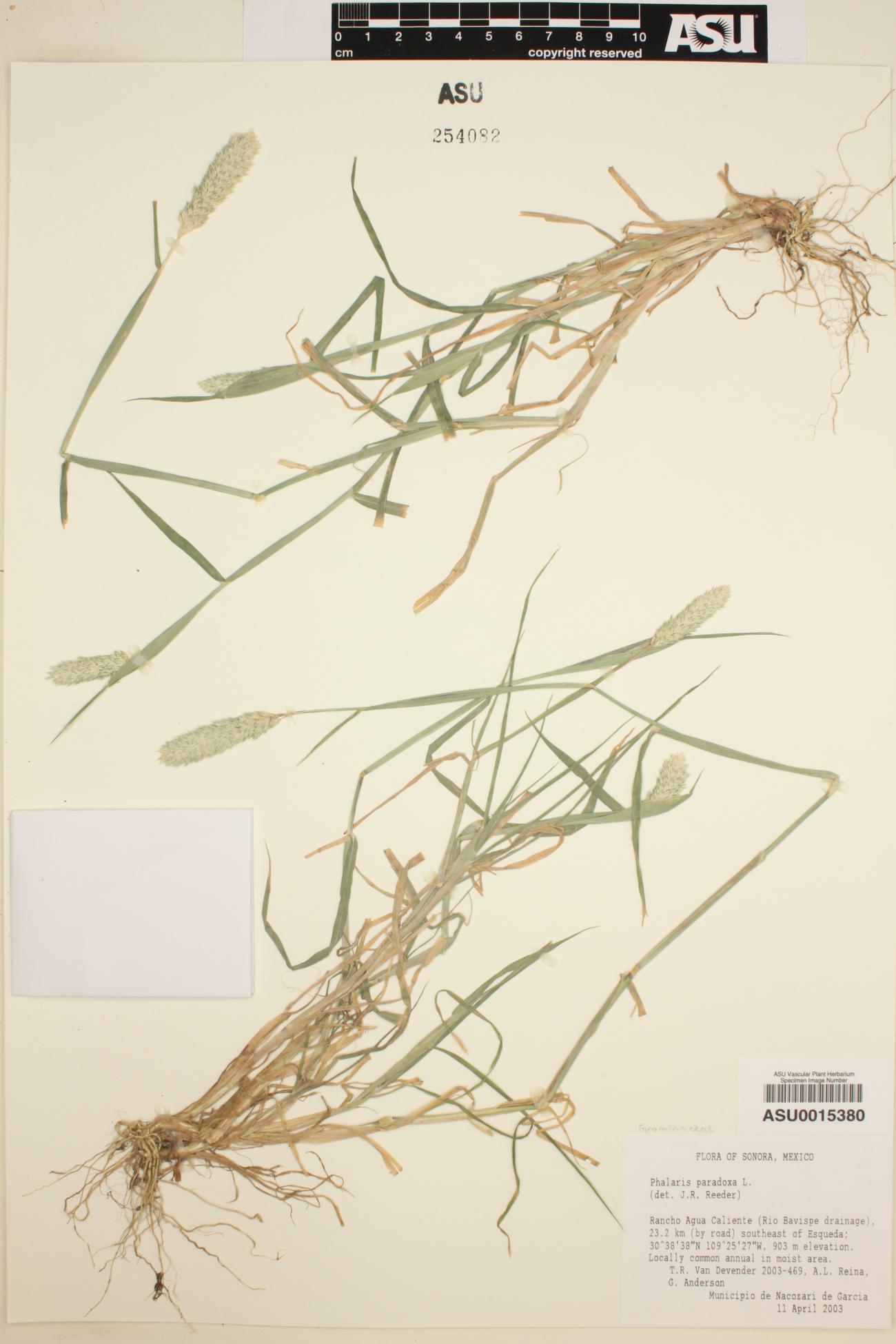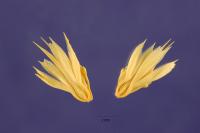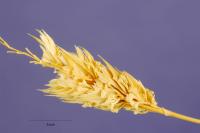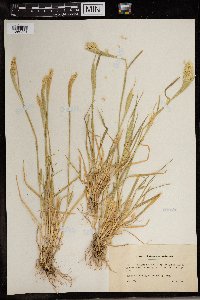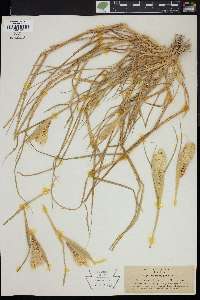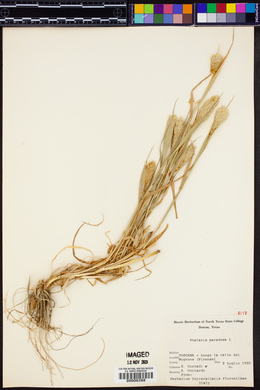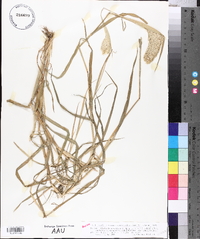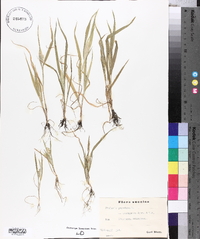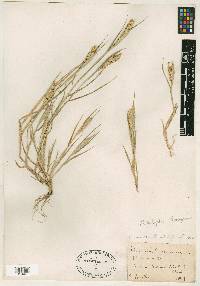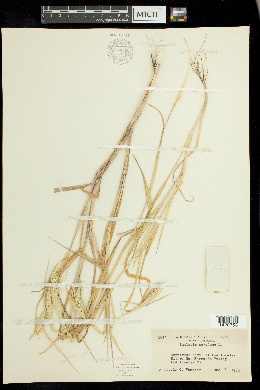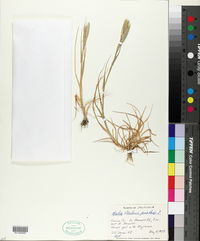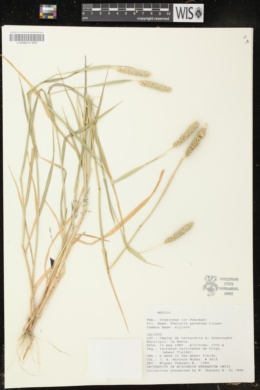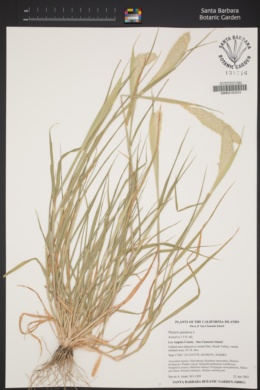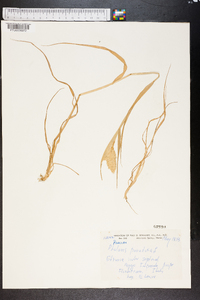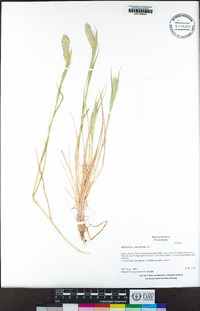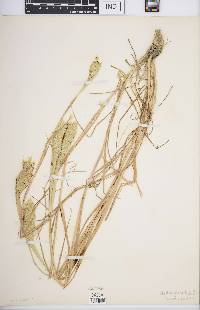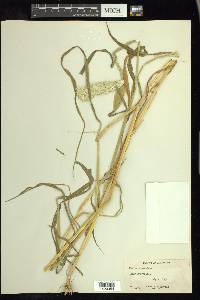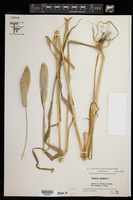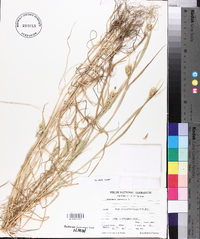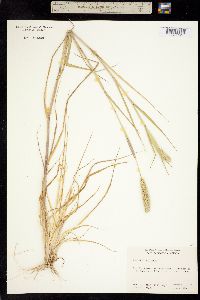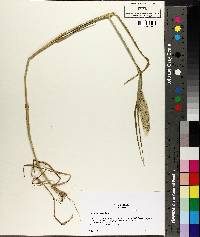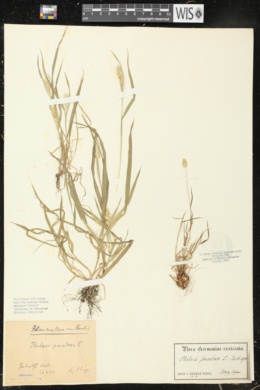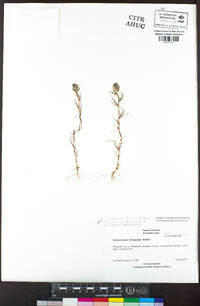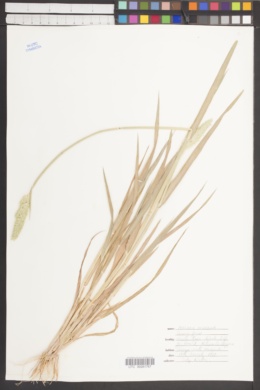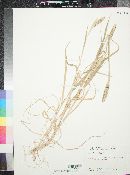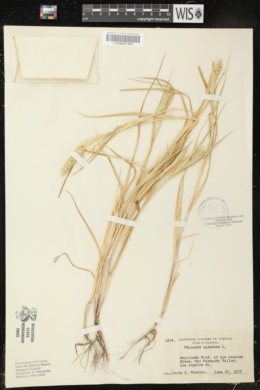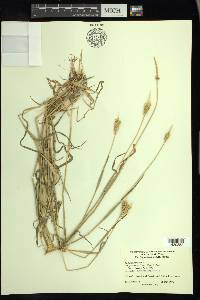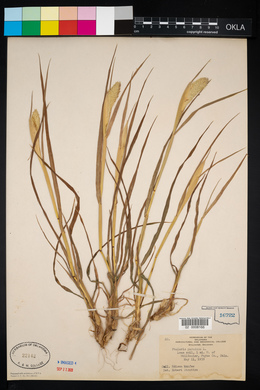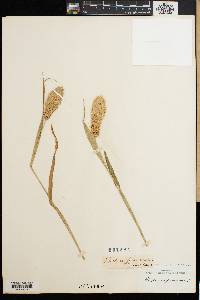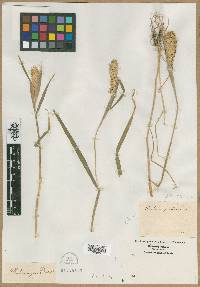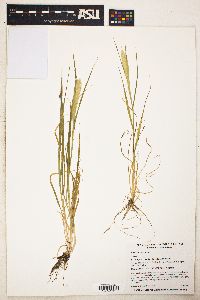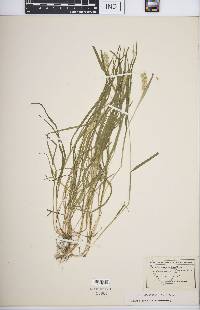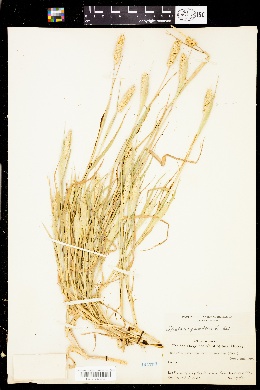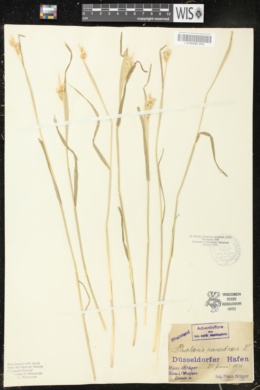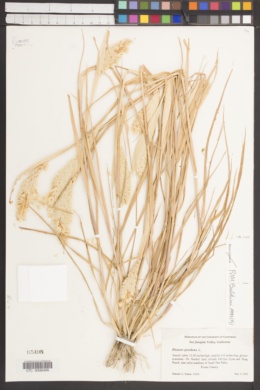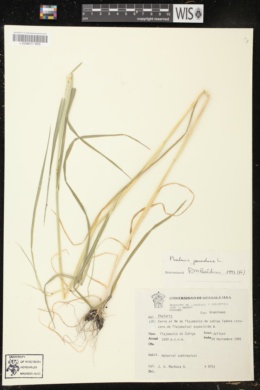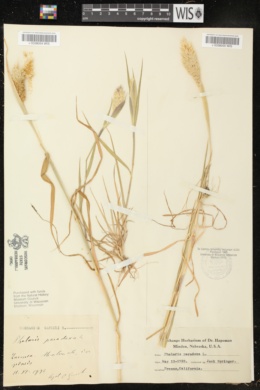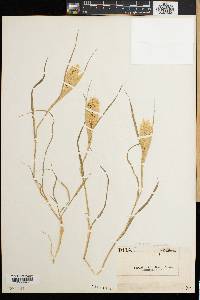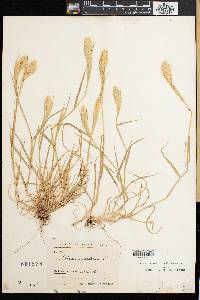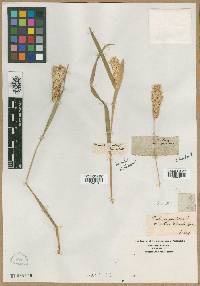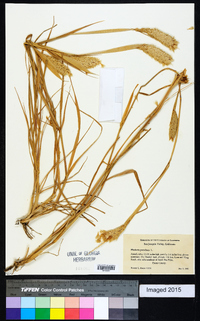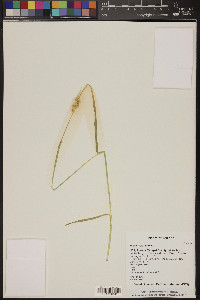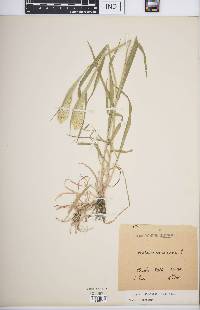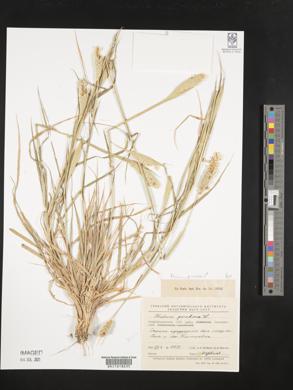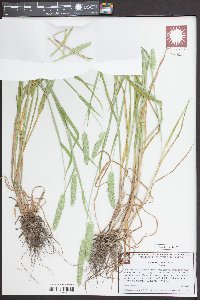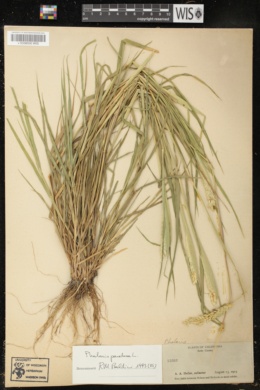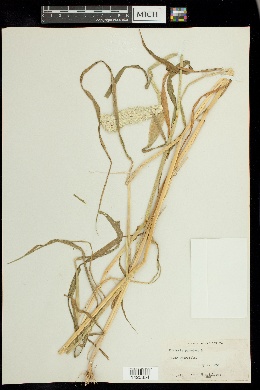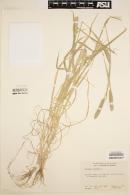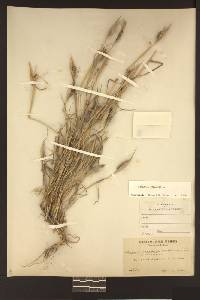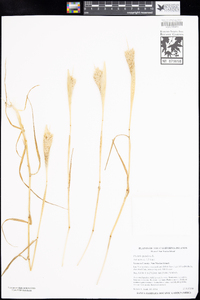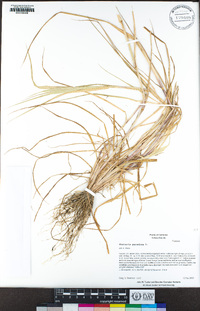Phalaris paradoxa
|
|
|
|
Family: Poaceae
hood canarygrass, more...Mediterranean Canary Grass, Hooded Canarygrass
[Phalaris paradoxa f. praemorsa (Lam.) Paunero, morePhalaris paradoxa var. intacta Coss. & Durieu, Phalaris paradoxa var. intermedia Coss. & Durieu, Phalaris paradoxa var. megastachys Goiran, Phalaris paradoxa var. microstachys Goiran, Phalaris paradoxa var. paradoxa L., Phalaris paradoxa var. praemorsa (Lam.) Coss. & Durieu, Phalaris paradoxa var. typica Paunero, Phalaris praemorsa Lam., Phalaris sibthorpii Griseb., Phalaris utriculosa L. ex Munro] |
Plants annual; tufted. Culms 20-100 cm, not swollen at the base. Ligules 3-5 mm, truncate to acute; blades 5-10(15) cm long, 2-5 mm wide. Panicles 3-9 cm long, about 2 cm wide, dense, obovoid to clavate, tapering at the base, rounded to truncate at the top; branches with groups of 5-6 usually staminate, rarely sterile spikelets clustered around a terminal pistillate or bisexual spikelet, the spikelets homomorphic; pedicels hispid; disarticulation beneath the spikelet cluster. Spikelets heterogamous, some staminate or sterile, others bisexual or pistillate; florets 3, the lowest 2 florets sterile, highly reduced, the terminal floret staminate, pistillate, or bisexual (rarely sterile). Glumes of staminate or sterile spikelets usually narrowly winged and to 9 mm long and clavate, those of the spikelets at the base of the panicles reduced to knobs of tissue terminating the pedicels; glumes of pistillate or bisexual spikelets 5-8 mm long, about 1 mm wide, keeled, keels winged, wings 0.2-0.4 mm wide, terminating below the apices and forming a single, prominent tooth, lateral veins conspicuous, apices acuminate to awned, awns about 0.5 mm; sterile florets of all spikelets 0.2-0.4 mm, knoblike projections on the calluses of the terminal florets, often with 1-2 hairs; terminal florets of all spikelets 2.5-3.5 mm long, 0.8-1.5 mm wide, indurate, shiny, glabrous or with a few short hairs near the tip; anthers 1.5-2.5 mm. 2n = 14. Phalaris paradoxa is native to the Mediterranean region; it is now found throughout the world, primarily in harbor areas and near old ballast dumps. It is an established weed in parts of Arizona and California. Within an inflorescence, the most reduced sterile spikelets are located near the base, and the most nearly normal spikelets are near the top. FNA 2007, Gould 1980 Common Name: hood canarygrass Duration: Annual Nativity: Non-Native Lifeform: Graminoid General: Coarse tufted annual with stems 20-100 cm, often geniculate and spreading at the base, sometimes rooting at the lower nodes. Vegetative: Blades 5-10 cm long, 2-5 mm wide, weak, flat and scabrous, ligules 3-5 mm, membranous, the upper leaf sheath is often inflated and encloses the base of the panicle. Inflorescence: Panicle 3-9 cm long, 2 cm wide, dense, obovoid to club shaped, tapers to base, rounded to truncate at top; branches with groups of 5-6 spikelets, each cluster has one fertile spikelet and 4-5 sterile spikelet, those on the upper part of the panicle on long pedicels, disarticulation beneath the spikelet cluster; 3 florets, lowest 2 sterile, highly reduced, terminal staminate, or bisexual; glumes of sterile spikelets narrowly winged, to 9 mm long and club shaped, glumes of bisexual spikelets 5-8 mm long, about 1 mm wide, keeled, keels winged, less than 0.5 mm wide, terminating below the apices and forming a single prominent tooth, awned with awns about 0.5 mm. Ecology: Found in cultivated fields and other disturbed sites, now widespread in the region. Notes: Introduced and now an established weed. Distinguished by the relatively thick panicle, with its upper spikelets on long pedicels. Ethnobotany: Unknown Etymology: Phalaris is from Greek phalaros, having a patch of white, crested, or phalos, shining, bright, white, while paradoxa means unusual. Synonyms: Phalaris paradoxa var. praemorsa Editor: SBuckley, 2010 |

